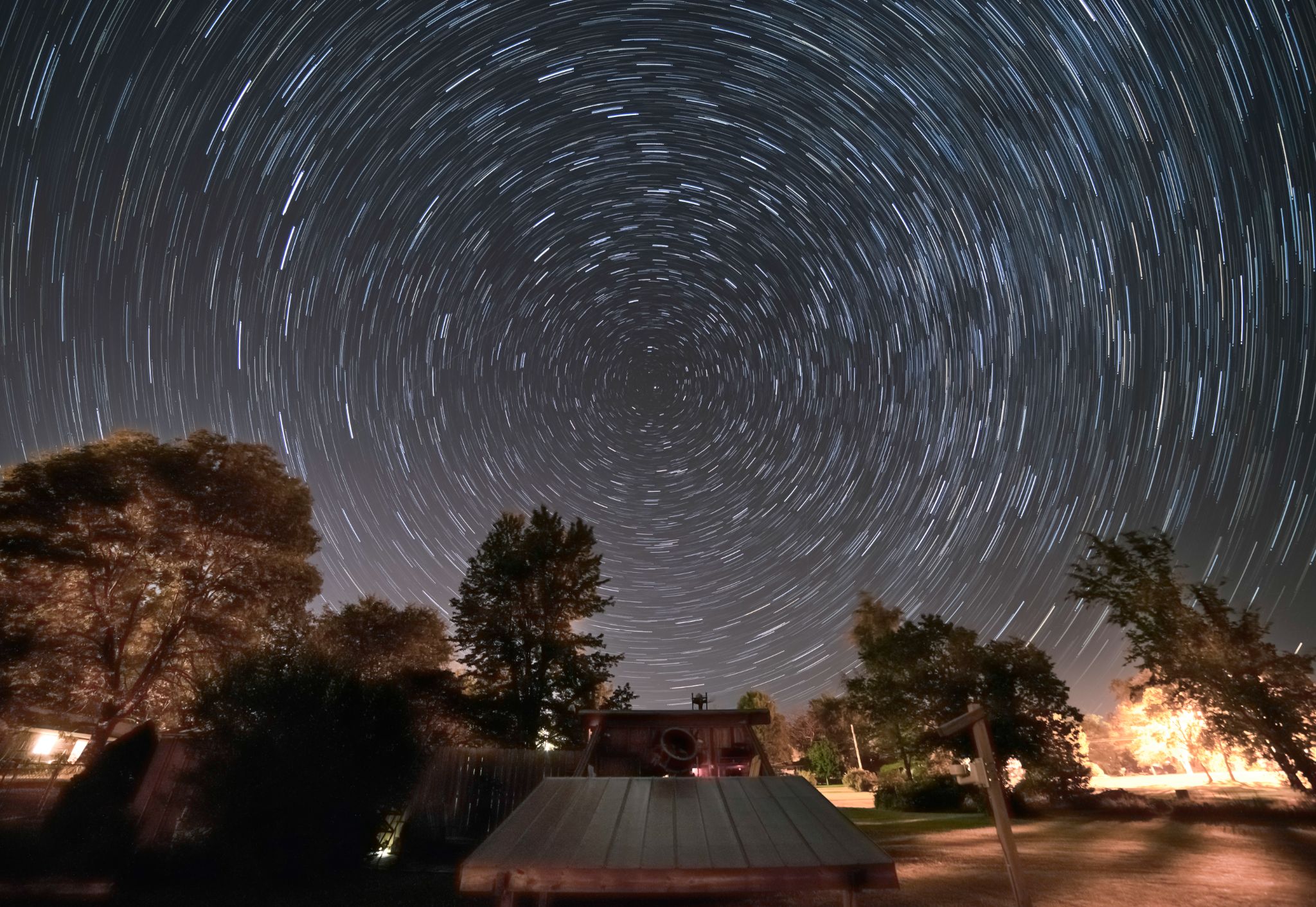EarthSky Community Photos
Submit your photo here. Comment or upvote on photo pages. Search via photographers' names. More improvements coming! To help, please donate.

Albany, Missouri, USA
11:30 pm
Nikon D750 with 14mm Rokinon Lens set at f/5
ISO 1600 and 30-second X 55 Exposures
Subs were imported as layers and combined in Photoshop using "Lighten" function
"Star Trails over Amateur Observatory" - Albany, Missouri
The skies at night are very dark over rural Albany, Missouri. Here is a sequence that I put together over the holiday weekend. Star Trails are caused by the rotation of the Earth leaving a trail of stars on the photographic image. The stars themselves are not moving. It's the earth that is rotating causing this effect. What appears to be a strange Photoshop effect is actually a natural phenomenon recorded on photographic images.
In the foreground can be seen my amateur astronomical observatory with a 20-inch telescope aimed at the sky.
Here's what I did:
1. Set up my tripod-mounted camera and wide-angle lens aimed near the Celestial Pole in the sky. The brightest star nearest the celestial pole is called Polaris or "The North Star"
2. Set the camera settings with a proper exposure and sensitivity so that it records the stars and any foreground details that you want. In this case, the exposure was set at 30 seconds.
3. Set the camera controls so that it takes a series of consecutive uninterrupted exposures. In this case, I took around fifty to sixty 30-second exposures which lasted around a half hour.
4. Once finished, I blended or stacked the images that I took on the computer. The result shows a stationary Earth with star trails above. Polaris is the star at the focus or center of the circular star trails that doesn't appear to leave a star trail.








